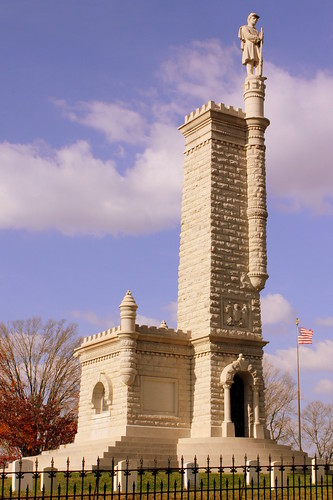
The Union Soldier monument, in the National Cemetery's eastern corner, was erected in the early 1900s. In 1892, Knoxville's Confederate veterans installed a 48-foot monument topped by a statue of a Confederate soldier at the Confederate National Cemetery near the Mabry-Hazen House in East Knoxville. Not to be outdone, the local chapter of the Grand Army of the Republic formed a commission, headed by former Union Army officer and Knoxville Journal publisher William Rule, to raise money to build a monument of greater size at Knoxville National Cemetery.
Completed in 1901, the monument initially stood 50 feet— the height having been calculated to surpass that of the Confederates' monument— and was topped by a bronze eagle with wings spread. On August 22, 1904, however, the eagle was shattered by a bolt of lightning, the sound of which rattled Knoxville and could be heard for miles all around. Undaunted, the GAR commissioners planned immediate reconstruction, using federal funds secured by Congressman Henry R. Gibson. The new monument, designed by the local architectural firm Baumann Brothers, largely followed the original design, the exception being a marble statue of a Union soldier placed atop the monument rather than an eagle. The new monument was completed on October 15, 1906.
The monument, built of locally-quarried marble, represents a medieval fortress, with stained glass windows and an inner room and staircase. The 8-foot soldier statue stands at post atop the main tower. The monument is sometimes called the "Wilder Monument," as local legend suggests the soldier bears the likeness of Union general and East Tennessee businessman John T. Wilder.
No comments:
Post a Comment